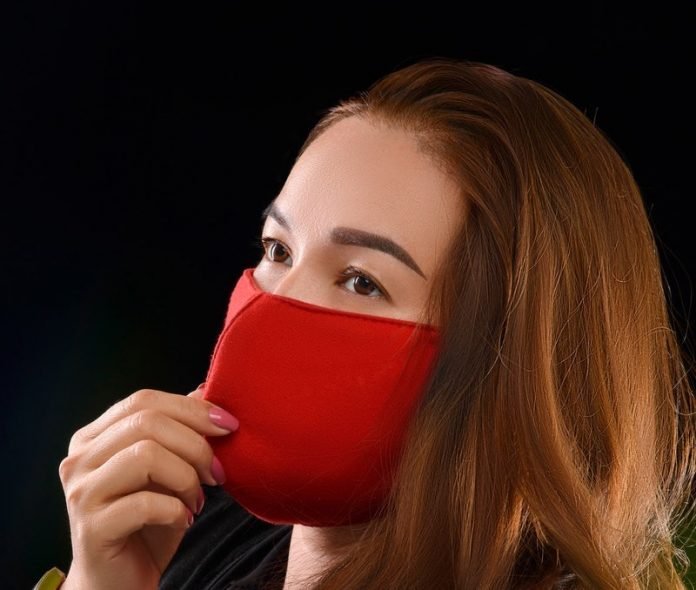
If you haven’t been wearing a mask regularly, now’s the time to start – and if you’re already in the habit, now’s the time to kick it up a notch.
Love them or loathe them, masks have become a critical part of the world’s response to the COVID-19 pandemic.
They keep the coronavirus from spreading from person to person, allow people to go to work and school safely, and make it safer to see friends and relatives, play sports and go shopping.
That’s why masks are required in many places across the United States – including new ones covered by President Biden’s new executive orders for federal facilities and employees, signed within hours of his inauguration.
Of course, masks aren’t the only tool against the coronavirus.
But combined with reduced in-person gatherings, widely available testing and greater attention to hand washing and disinfecting surfaces, masks have really made a difference in other countries and parts of the United States.
Now, experts are worried that the arrival of more contagious variants of the virus, combined with the patchwork quilt of state and local mask mandates, and sheer sick-of-the-pandemic fatigue, will allow coronavirus to spread faster than ever.
That means that just as the vaccine we’ve all waited for is arriving, the virus could sicken and kill many more people in the coming months.
In other words, America, it’s time to take your mask wearing to a new level.
“We’re at a critical moment for keeping the virus at bay while we roll out vaccinations to hundreds of millions of people,” says Amanda Valyko, M.P.H., the Director of Infection Prevention and Epidemiology at Michigan Medicine.
“Thanks to research and experience over the past year, we know that mask-wearing by the general public, not just health care workers, makes a big difference. And we’re also learning more about how the type of mask matters.”
Here are the top tips for mask-wearing in 2021:
- Keep wearing your face mask.
Every time you’re near someone who you don’t live with, you should be wearing a mask – even outdoors, and even if your state or city doesn’t require it.
Make sure your mask goes over your mouth and nose, and that there aren’t gaps along the sides or at the top of your nose. If you wear glasses, tuck the mask under the bottoms of the lenses.
Thanks to research, we now know that half of COVID-19 cases happened because someone got exposed to an infected person who didn’t know they were infected or didn’t have symptoms.
You don’t want to be the person who gets sick, nor the person who makes others sick – especially someone who is much more vulnerable than you.
You should also wear a mask in your own home under certain circumstances if someone you live with has been told they’ve been exposed to someone with the virus, or if they test positive or develop COVID-19 symptoms.
Everyone who lives with you should stay home in quarantine, and the affected person should stay isolated in a closed room within your home whenever possible.
Both you and they should wear a mask when you enter or they leave the isolation room, such as bringing them food or supplies, or when they use the bathroom.
If someone asks you why you’re wearing a mask in public, or doesn’t agree to wear one when they’re near you, keep your distance, politely say you’re following the science about the virus, and move on.
Masks have become political, but you don’t need to get into a political argument to protect your health and those you live with.
- Even after you get vaccinated for COVID, keep wearing your mask.
While current COVID vaccines have great efficacy, they are still not 100% effective. The first vaccines require two doses, several weeks apart, to take full effect.
And even after your second dose your immune system needs a week or two to ramp up fully to fight the coronavirus if you get exposed.
Plus, you could have been exposed to coronavirus just before either of your doses, and not know you’re infected.
Researchers are working to find out just how well the vaccine could keep you from spreading the virus even if you do get infected after you’re fully vaccinated.
Once we know that, vaccinated people might be able to go without masks in certain settings. But not until experts say it’s safe.
It will take months to get all adults vaccinated, and children and teens will take longer. Until a vast majority of the American public is vaccinated, expect mask requirements to continue.
- Wash your cloth masks often.
After you go out for a walk with a friend, or to the grocery store, your mask is potentially contaminated with any viruses you breathed out or ones you would have otherwise breathed in.
Plus there’s all the moisture you breathed out, which is full of bacteria that could grow in the fabric, making it smell bad and contributing to acne breakouts.
Handle your cloth mask carefully as you take it off, put it directly in a laundry hamper or a ‘dirty pile’ for hand washing. And then wash your hands after handling it.
Launder your masks with detergent and dry in a warm to hot dryer. You can also hang to air dry, ideally in direct sunlight.
- Limit reuse of disposable masks – use one for a day at most and then discard.
Throw them in the trash (not on the ground, please) after using them for a few hours, or if they get torn, dirty or become damp.
- Choose the thickest mask you can tolerate.
The more layers of fabric in your face mask, the better – two at the very least. The less-stretchy the fabric, the better, since stretching means holes can open between fibers.
Or, choose the kind with a removable disposable filter between the layers of fabric.
- No face masks with valves.
If you have cloth masks with valves – little round areas where air flows more freely – throw them out or only wear them over a disposable mask.
By themselves, they don’t protect the people around you because the valve allows your germs to get out.
- Have spare masks on hand.
Make sure everyone in your house has a variety of cloth masks so you can have some to wash and some ready to wear.
Your local health department, city or town government, hospital, insurance company or nonprofits might even be giving masks away.
Pick up a box of disposable masks so you can stash a few in your vehicle, handbag, toolbox or near your front door.
Insist that people who enter your home to do work put one on and keep it on, if they arrive without one.
The same goes for unexpected guests, who should also remain outside or agree to let the windows be open when they’re inside for a short, masked visit.
And if you have to give someone a ride in your vehicle, even a child, make sure everyone wears a mask, open the windows, and keep the fresh air coming in through the vents.
- Make a statement with your mask.
The mask movement has inspired crafters and entrepreneurs everywhere.
You can get masks that show your fashion sense; your personal interests, your favorite brands, teams or bands; your political leanings; and even ones that say you’re only wearing a mask because you have to.
Match them to your outfit, coordinate with your friends and family, and have some fun. Lighten up everyone’s mood with a cheery or funny one. Make the most of the challenging moment we’re in.
- Stay warm.
As winter drags on, masks actually help keep your face warm when you’re out for a walk, run or small outdoor gathering (and let’s face it, almost all of us should be getting more exercise.) If cold, dry air makes you cough, the warm and moist air inside your mask might prevent that.
- Normalize mask wearing, and help those who might be new to this.
Worries about new variants of the virus, and new rules in places that might not have mandated masks before, mean that more people may be getting used to wearing masks.
If you’re an old pro at this, help them by sharing tips and complimenting their masks.
Normalize mask use by wearing one in your social media profile and selfies with other people, as well as in your car with someone you don’t live with.
- Let the young lead.
Make sure children and teens know they need to mask up too, and that they can often be leaders in prevention of health threats, reminding grownups of the right thing to do and how to do it (that’s what happened with regular tooth brushing, and seatbelt use, decades ago.)
Talk about the subtle peer pressure that they may face from those who don’t want to wear a mask, and why they need to lead by example and find friends to help them stand up to that pressure.
If your child or teen resists, make mask wearing a condition of being able to go for walks or bike rides with friends, or just to hang out. No mask, no outings.
Talk to them about the science showing that new variants of the virus can spread more easily among young people – and about the role of healthy people as spreaders of the virus, even if they don’t get sick themselves.
Written by Kara Gavin.



